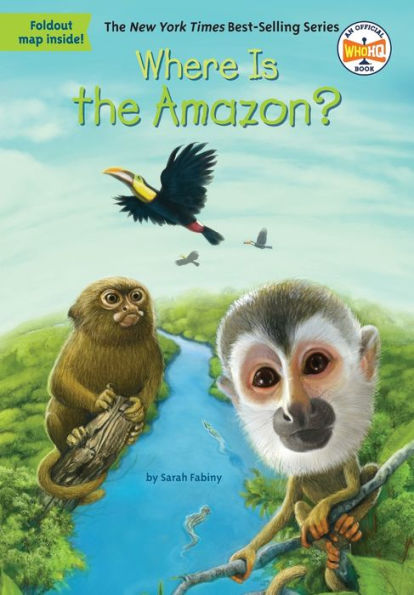Read an Excerpt
Where Is the Amazon?
On August 26, 1542, Francisco de Orellana, a Spanish explorer, and his crew finally arrived at the Atlantic Ocean. They had been sailing down a mighty river in South America. The journey had lasted more than two hundred days. The river and the surrounding landscape were like nothing they had ever come across. The river was so wide that they could not see across it in places. And the creatures swinging in the trees, splashing in the water, and flying through the sky were not like the creatures in Spain.
When Orellana and his men arrived back in Spain, Orellana told stories about their incredible journey to anyone who would listen. And it was no wonder why—the river that Orellana and his men had traveled down was the Amazon. And the surrounding landscape was the Amazon rain forest.
The Amazon is truly one of the natural wonders of the planet. Although not the longest river in the world, it carries more water than the Nile, the Mississippi, and the Yangtze combined. The river has about fifteen thousand tributaries (rivers and streams) that flow into it. Four of them are each more than one thousand miles long.
This incredible river flows through a rain forest that is probably the oldest in the world. (A rain forest is a forest with tall trees; a warm, humid climate; and lots of rain.) The Amazon rain forest includes areas of nine South American countries: Brazil, Peru, Colombia, Venezuela, Ecuador, Bolivia, Guyana, Suriname, and French Guiana. And it covers an area the size of the United States, not including Alaska and Hawaii. Scientists believe there may be around 400 billion individual trees in the rain forest. That’s more than a thousand trees for every person in the United States.
Since Francisco de Orellana’s time, the Amazon River and the rain forest have been explored by thousands of people. The plants, animals, and people living in this part of the world have captured the interest of scientists, explorers, and tourists. It may seem that after almost five hundred years, there would be no more to learn. But the Amazon is special. What we are discovering is that there will always be more to discover about this incredible place.
Chapter 1: The River Changes Course
The mighty Amazon River starts high up in the Andes Mountains in Peru along the west coast of South America. The river then flows east for more than four thousand miles across South America and empties into the Atlantic Ocean off the coast of Brazil.
The Amazon didn’t always flow east. It used to flow westward and emptied into the Pacific Ocean. However, the formation of the Andes Mountains, about fifteen million years ago, led to the river changing direction. The mountains blocked the flow of the Amazon. It became a sea—a huge inland body of water. Over a long period of time, this inland sea gradually changed to into a massive swampy lake.
The environment of the area also changed during this time. For millions of years, much of the land around the Amazon River had been a mix of rain forests (wet forests) and savannas (dry grasslands). But when the river got blocked up, much of the savannas became rain forest. More rain fell in the area, which meant more plants, bushes, and trees grew there. The climate became hot and humid.
About ten million years ago, the water in the freshwater lake slowly worked its way through the sandstone at the bottom. The water was able to start moving. The lake became a river again. Only this time it was flowing eastward.



